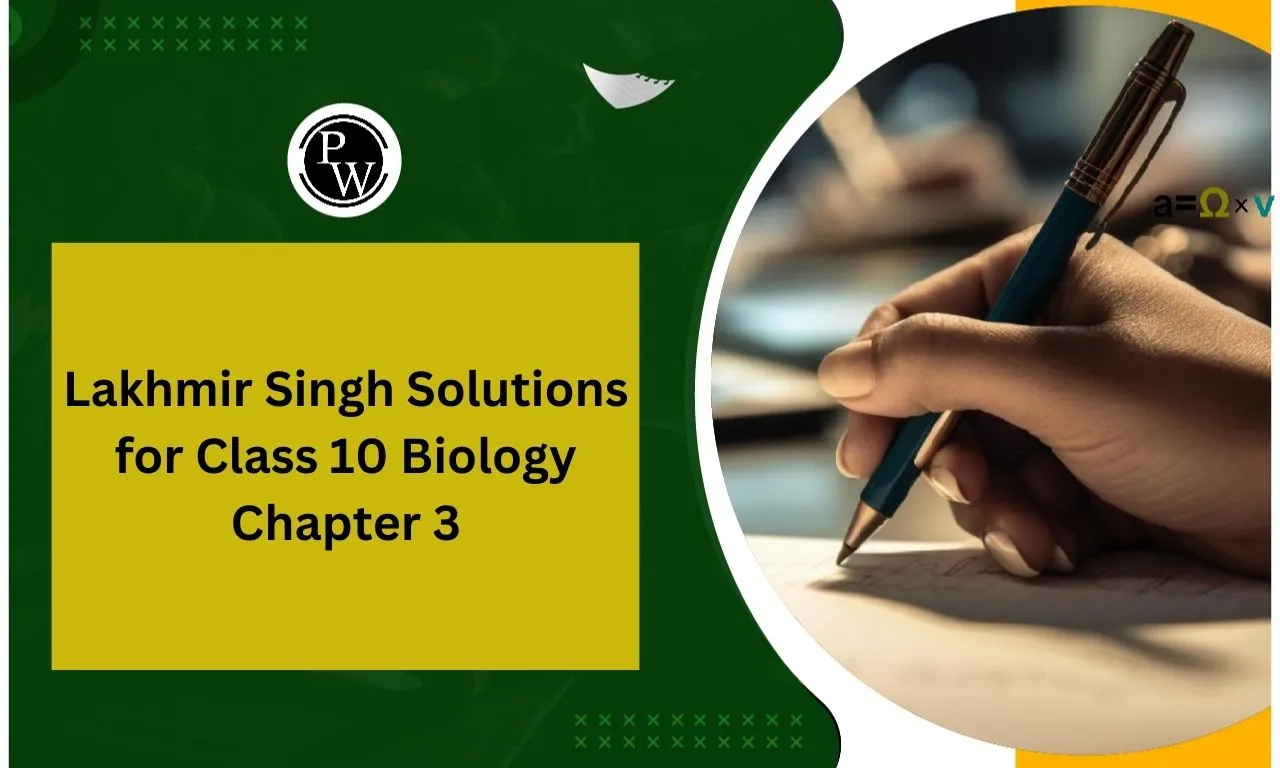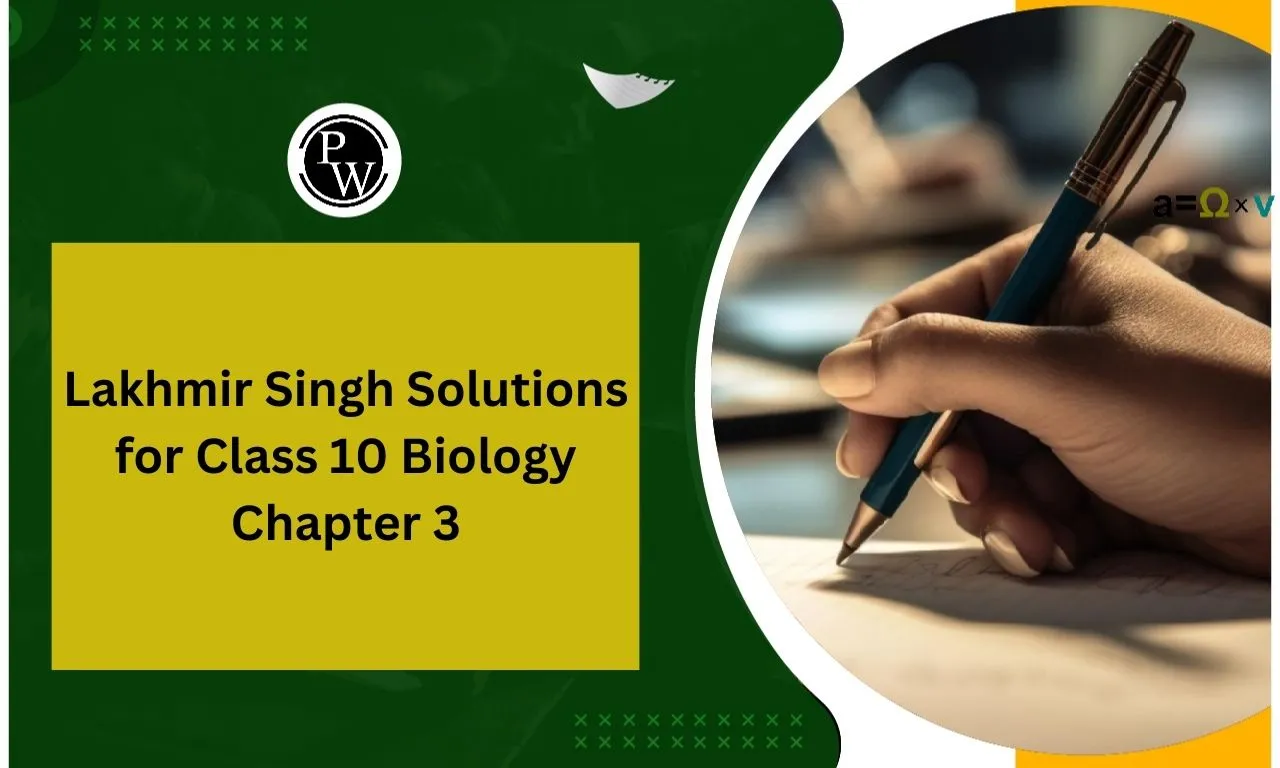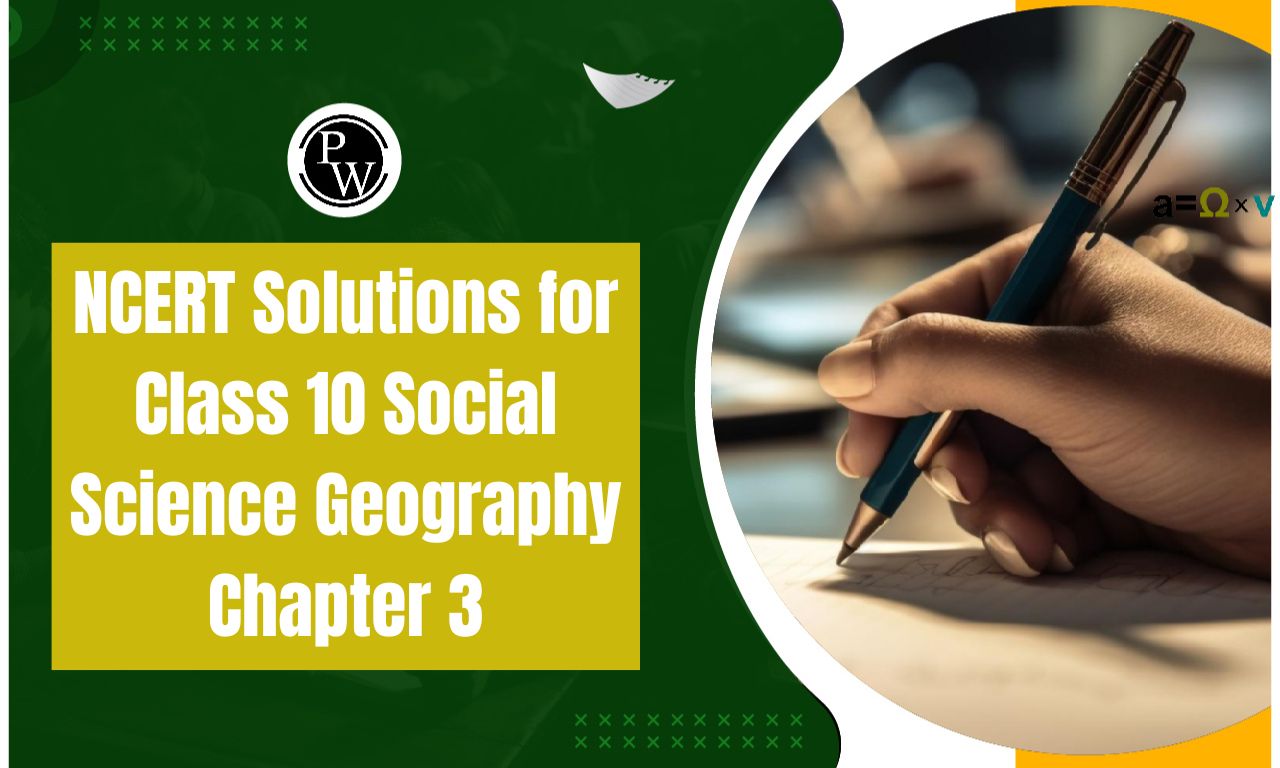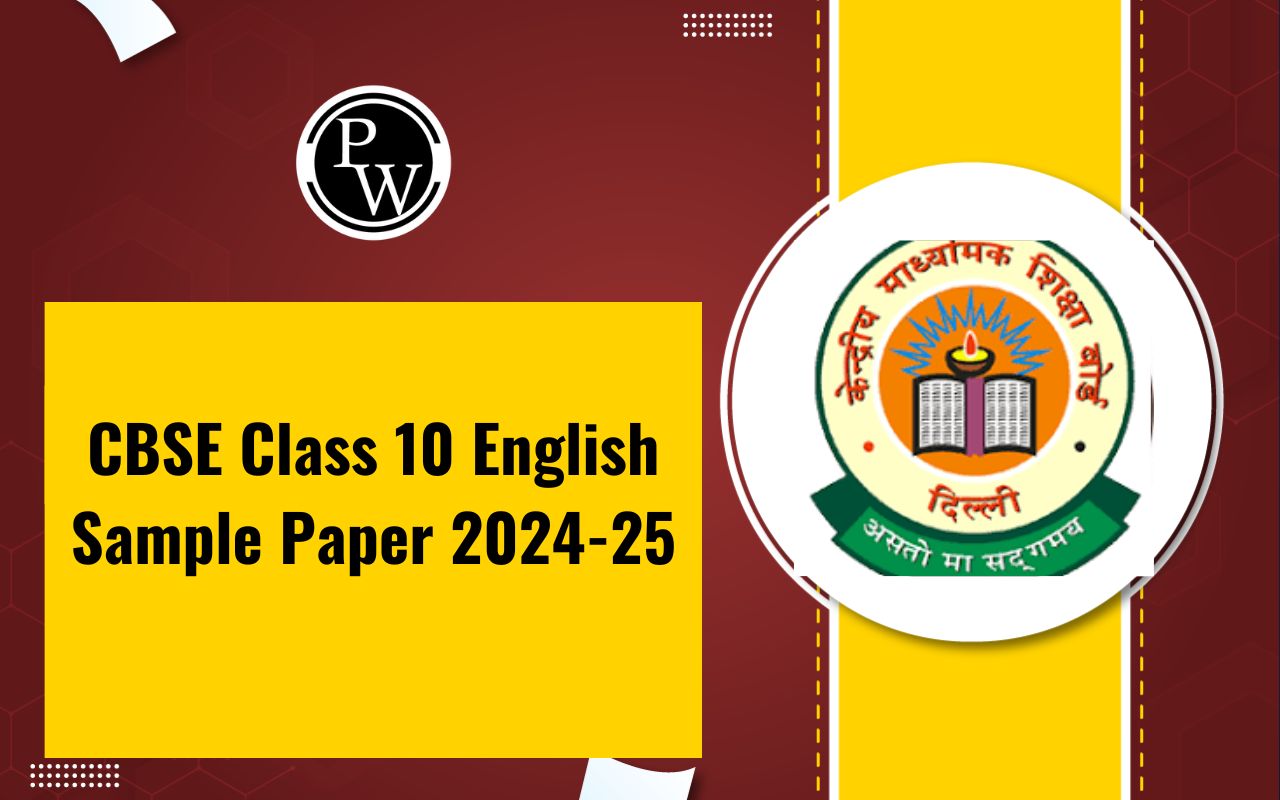

Lakhmir Singh Solutions for Class 10 Biology Chapter 3: Lakhmir Singh's Class 10 Biology Chapter 3: How Do Organisms Reproduce? explains the various modes of reproduction in living organisms.
It covers asexual reproduction methods like binary fission, budding, and fragmentation, as well as sexual reproduction in plants and animals.
The chapter discusses human reproductive systems, fertilization, menstrual cycles, and reproductive health. Understanding this topic is essential as it explains how life continues through generations, the role of DNA in heredity, and the importance of reproductive health.
It also highlights modern contraceptive methods and population control measures, making it relevant to real-life applications in health and medicine.
Lakhmir Singh Solutions for Class 10 Biology Chapter 3 Overview
Lakhmir Singh's Class 10 Biology Chapter 3: How Do Organisms Reproduce? explains different modes of reproduction, including asexual methods like binary fission and budding, as well as sexual reproduction in plants and animals. It covers human reproductive systems, fertilization, menstrual cycles, and reproductive health.
Understanding this chapter is important as it explains heredity, genetic continuity, and population control. It also highlights reproductive health, contraception, and the impact of uncontrolled population growth. These concepts are crucial for awareness about health, family planning, and medical advancements.
Lakhmir Singh Solutions for Class 10 Biology Chapter 3 PDF
Lakhmir Singh's Class 10 Biology Chapter 3: How Do Organisms Reproduce? explains various reproduction methods, including asexual and sexual reproduction in plants and animals.
It also covers human reproductive systems, fertilization, and reproductive health. Understanding these concepts is essential for learning about heredity, population control, and medical advancements. To help students, we have provided a PDF below containing detailed solutions, including explanations and answers to all exercises for effective learning.
Lakhmir Singh Solutions for Class 10 Biology Chapter 3 PDF
Lakhmir Singh Solutions for Class 10 Biology Chapter 3How Do Organisms Reproduce?
1. Which life process ensures that a plant or animal species will not disappear from this earth?
Answer
The process of reproduction ensures that a plant or animal species does not disappear from Earth.
2. What is the name of the reproductive process :
(a) which involves two parents?
(b) which involves only one parent?
Answer
(a) Sexual reproduction
(b) Asexual reproduction
3. State whether the following statement is true or false:
Spores produced by the bread mould plant are actually its seeds.
Answer
True.
4. Most of the plants reproduce by sexual method. Name two plants which can reproduce asexually.
Answer
Hydra and Ferns reproduce asexually through vegetative reproduction.
5. Which type of reproduction :
(a) involves gametes?
(b) does not involve gametes?
Answer
(a) Sexual reproduction
(b) Asexual reproduction
6. State whether human beings reproduce by sexual method or asexual method.
Answer
Human beings reproduce sexually.
7. (a) Name two animals which reproduce sexually.
(b) Name two animals which reproduce asexually.
Answer
(a) Two animals which reproduce sexually are cow and dog.
(b) Two animals which reproduce asexually are Planaria and Sponges.
8. Name one organism which reproduces by spore formation.
Answer
Protozoa reproduces through spore formation.
9. Name the method by which Paramecium reproduces. Is this method sexual or asexual?
Answer
Paramecium uses the asexual reproduction process of fission to replicate.
10. Name two plants :
(a) which can be grown from their broken stems.
(b) Which can be grown from their leaves.
Answer
(a) Rose and money plant
(b) Cactus and African violet
11. Name the asexual method of reproduction in yeast.
Answer
Budding is the asexual method of reproduction in yeast.
12. Name the asexual method of reproduction in (a) Hydra, and (b) Plasmodium.
Answer
(a) Budding
(b) Multiple fission
13. What is the name of asexual reproduction method in:
(i) Spirogyra, and (ii) Leishmania?
Answer
(i) Fragmentation
(ii) Binary fission
14. Name the artificial propagation method used for the propagation of (a) rose plants, and (b) apple trees.
Answer
(a) Cutting.
(b) Grafting.
15. Which artificial propagation method is used for the production of jasmine plants?
Answer
The artificial propagation method used for producing jasmine plants is layering.
16. Name the natural method by which strawberry plants are propagated.
Answer
The natural method by which strawberry plants are propagated by layering.
17. Name two plants which are propagated by layering method.
Answer
Jasmine and strawberry are propagated by layering.
18. Name any two plants which are propagated by cuttings method.
Answer
Rose and grapes plants are propagated by the cutting method.
19. Write down the different methods of asexual reproduction.
Answer
The different methods of asexual reproduction are:
-
Fission
-
Budding
-
Spore formation
-
Regeneration
-
Fragmentation, and
-
Vegetative reproduction
20. Why are budding, fragmentation and regeneration, all considered to be asexual type of reproduction?
Answer
Since only one parent is needed and no gametes are formed, budding, fragmentation, and regeneration are regarded as the various forms of asexual reproduction.
21. Fill in the following blanks with suitable words :
(a) the process of_________ ensures continuity of life on earth.
(b) Plasmodium reproduces by the process of _________ fission whereas Paramecium reproduces by the process of _________ fission.
(c) Rose plants and sugar cane crop are usually grown by the _________method.
(d) Vegetative reproduction of potato plants is done by using_________
(e) Strawberry plants are propagated by the natural_________ method.
Answer
(a) Reproduction guarantees the continuation of life on Earth.
(b) Paramecium reproduces through binary fission, while Plasmodium reproduces through multiple fission.
(c) The cutting method is typically used to propagate sugarcane and rose plants.
(d) A potato plant's tuber is used for vegetative reproduction.
(e) The natural layering approach is used to propagate strawberry plants.
22. (a) What is a tuber? Name one stem tuber and one root tuber.
(b) What is name of the organ of propagation present in a tuber?
(c) Name one commonly used vegetable which is propagated by using tubers.
Answer
(a) The thickened and swollen stem or root of a plant that stores food for the plant and is grown underground, is called a tuber. For example, potato is a stem tuber
(b) The organ of propagation present in a tuber is the bud or eye.
(c) Potato is propagated through its tuber.
23. (a) What is meant by vegetative propagation?
(b) Vegetative propagation involves the growth and development of ‘something’ present in the old part of the plant to form a new plant. What is this ‘something’?
(c) Why do green grass plants spring up in dry fields on their own after the rains?
Answer
(a) Vegetative propagation is the process of creating new plants from the parts of existing plants, such as roots, shoots, and leaves, without the use of any reproductive organs. For instance, ginger rizome and potato tuber.
(b) Any plant part, including the roots, stems, or leaves, can be considered this "something."
(c) After rain, inactive buds in dried grass plant shoots scattered throughout the ground become active and produce new plants, causing green plants to spontaneously emerge in arid regions.
Benefits of Using Lakhmir Singh Solutions for Class 10 Biology Chapter 3
Clear Conceptual Understanding – Detailed explanations of reproduction processes help in grasping key biological concepts.
Exam-Focused Answers – Solutions follow the CBSE exam pattern, making it easier to score well in exams.
Easy-to-Understand Language – Simple and structured explanations enhance learning for students of all levels.
Diagram-Based Learning – Well-labeled diagrams improve comprehension of reproductive systems and processes.
Quick Revision – Concise solutions help in last-minute exam preparation and effective revision.
Covers All NCERT Questions – Provides step-by-step answers to all textbook exercises.
Improves Answer Writing Skills – Helps students frame accurate and structured responses for exams.
Supports Competitive Exam Preparation – Strengthens biological fundamentals useful for NEET and other exams.
Lakhmir Singh Solutions for Class 10 Biology Chapter 3 FAQs
What is Chapter 3 of Class 10 Biology in Lakhmir Singh?
Why is this chapter important?
Does it include diagrams?













